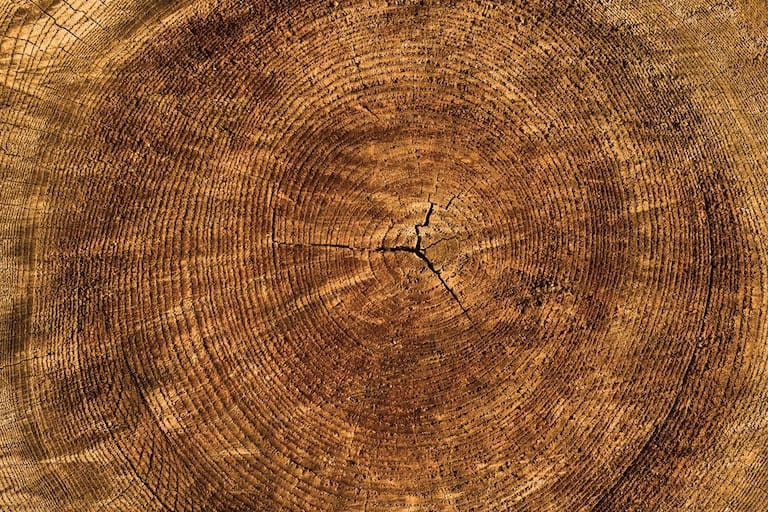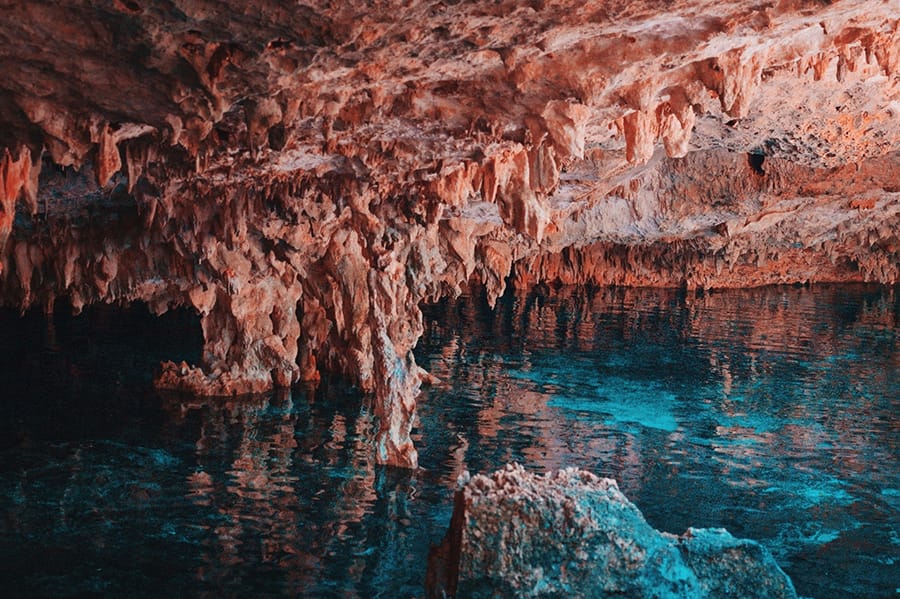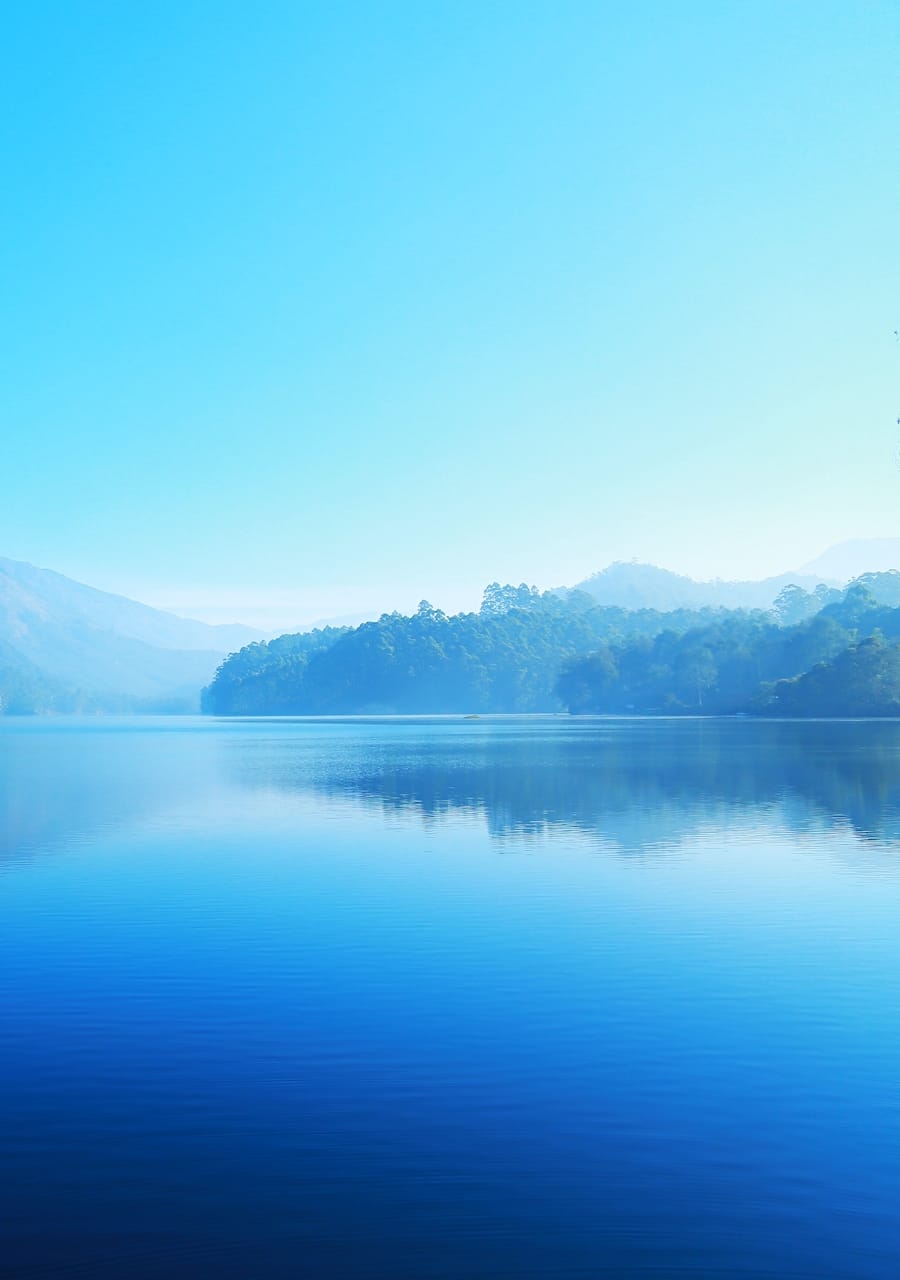Developing Chronologies for Reconstructing Past Climates
Paleoclimatology is the study of past climates, which can be used to contextualize the rate and magnitude of current global warming. Past climate is investigated using abiotic and biotic archives, including ice cores, tree-rings, corals, lake carbonates/sediments, and speleothems. These different archives record climate and environmental conditions within their deposit (sediments, ice cores, speleothems) and growth (tree-rings, corals, carbonates) layers, indicated by the variations in their physical and chemical structure.
In order to connect variations in climate recorded in archives to calendar years, a chronology must be developed to assess a specific year to each deposition or growth layer. Paleoclimate archives are generally dated using two main methods: radiocarbon (14C) and uranium-thorium (U-Th) dating. 14C dating tends to be more accurate, however, it can only be used on samples that are less than around 50,000 years old. Whereas U-Th dating can be used for the last 500,000 years (read more about the differences between 14C and U-Th dating).
Dating Tree-Rings: 14C
Tree-rings are a very common paleoclimate archive, particularly spanning the last few centuries. In order to date tree-rings, the individual rings must first be counted and measured. Each tree within a cohort must be statistically cross-dated against each other to build a chronology floating in time. Finally, to connect a floating tree-ring chronology to calendar years, radiocarbon dating of individual tree-rings must be undertaken.
After a tree-ring chronology is developed, stable isotopes (including carbon, δ13C) in wood cellulose can be analysed to reconstruct climate variables (e.g. Pauly et al. 2018).
Dating Corals: 14C + U-Th
Corals can be dated using both radiocarbon and U-Th dating. A combination of both is best since both dating methods have their drawbacks when applying them to coral samples. Radiocarbon dating of marine organisms can be subject to the marine reservoir effect. In this case, old carbon from the ocean can obscure the actual radiocarbon age, leading to high uncertainties. On the other hand, U-Th dating can be less precise, and corals may make U-Th dating even more difficult when secondary growths of thorium are present within the coral structure. However, when both U-Th and 14C dating are used together, dating issues can be pinpointed and resolved (see Grothe et al. 2016 for details).
After a coral chronology is developed, oxygen (δ18O), carbon (δ13C) and boron (δ11B) can be analysed to reconstruct climate variables (sea temperature, photosynthesis and ocean acidification, respectively).
Dating Speleothems: U-Th
Speleothems grow as a result of the formation of calcium carbonate crystals in a cave environment due to the percolation of water. The water that carries the crystals required for speleothem growth also contain natural uranium, which is the basis of U-Th dating of speleothems. Based on the activity ratios of uranium and thorium, each growth layer can be constrained to a specific calendar year. The years of the layers between are approximated using an age-growth curve.
After a speleothem chronology is developed, oxygen (δ18O) and carbon (δ13C) can be analysed to reconstruct climate variables (e.g. precipitation, temperature, vegetation).
Dating Lake Carbonates: 14C
Lake cores are another common proxy record, used to assess regional climate variability. Many lakes deposit sediments at regular intervals (seasonally, annually, biannually or even longer), however, in many cases it’s difficult to distinguish between the individual years which do not have distinct layers. For lake cores, different components can be dated using 14C dating (including carbonates). Dates are solidified for different layers, and then an age to depth curve is developed to approximate ages between successive dated layers. By having a robust, well dated model of the lake sediments, different climate events (such as the onset of the warm Holocene following the Younger Dryas Cold Reversal) can be accurately dated and analysed.
After a lake chronology is developed, oxygen (δ18O) can be analysed to reconstruct temperature variability (e.g. Lauterbach et al. 2011).
View our Paleoclimatology Webinar on-demand to learn more.
References
Grothe, P.R., Cobb, K.M., Bush, S.L., Cheng, H., Santos, G.M., Southon, J.R., Lawrence Edwards, R., Deocampo, D.M. and Sayani, H.R., (2016). A comparison of U/T h and rapid‐screen 14 C dates from Line Island fossil corals. Geochemistry, Geophysics, Geosystems, 17(3), pp.833-845. DOI: 10.1002/2015GC005893
Lauterbach, S., Brauer, A., Andersen, N., Danielopol, D.L., Dulski, P., Hüls, M., Milecka, K., Namiotko, T., Obremska, M., Von Grafenstein, U. and Declakes Participants, (2011). Environmental responses to Lateglacial climatic fluctuations recorded in the sediments of pre‐Alpine Lake Mondsee (northeastern Alps). Journal of Quaternary Science, 26(3), pp.253-267. DOI: 10.1002/jqs.1448
Pauly, M., Helle, G., Miramont, C., Büntgen, U., Treydte, K., Reinig, F., Guibal, F., Sivan, O., Heinrich, I., Riedel, F. and Kromer, B., (2018). Subfossil trees suggest enhanced Mediterranean hydroclimate variability at the onset of the Younger Dryas. Scientific reports, 8(1), pp.1-8. DOI: 10.1038/s41598-018-32251-2
Image references
Coral: https://www.pexels.com/photo/brown-coral-reef-in-water-3854024/
Speleothem: https://www.pexels.com/photo/water-under-caved-2432208/
Lake: https://www.pexels.com/photo/lake-surrounded-with-green-leafed-trees-40465/
Tree rings: https://www.pexels.com/photo/brown-tree-log-355802/




